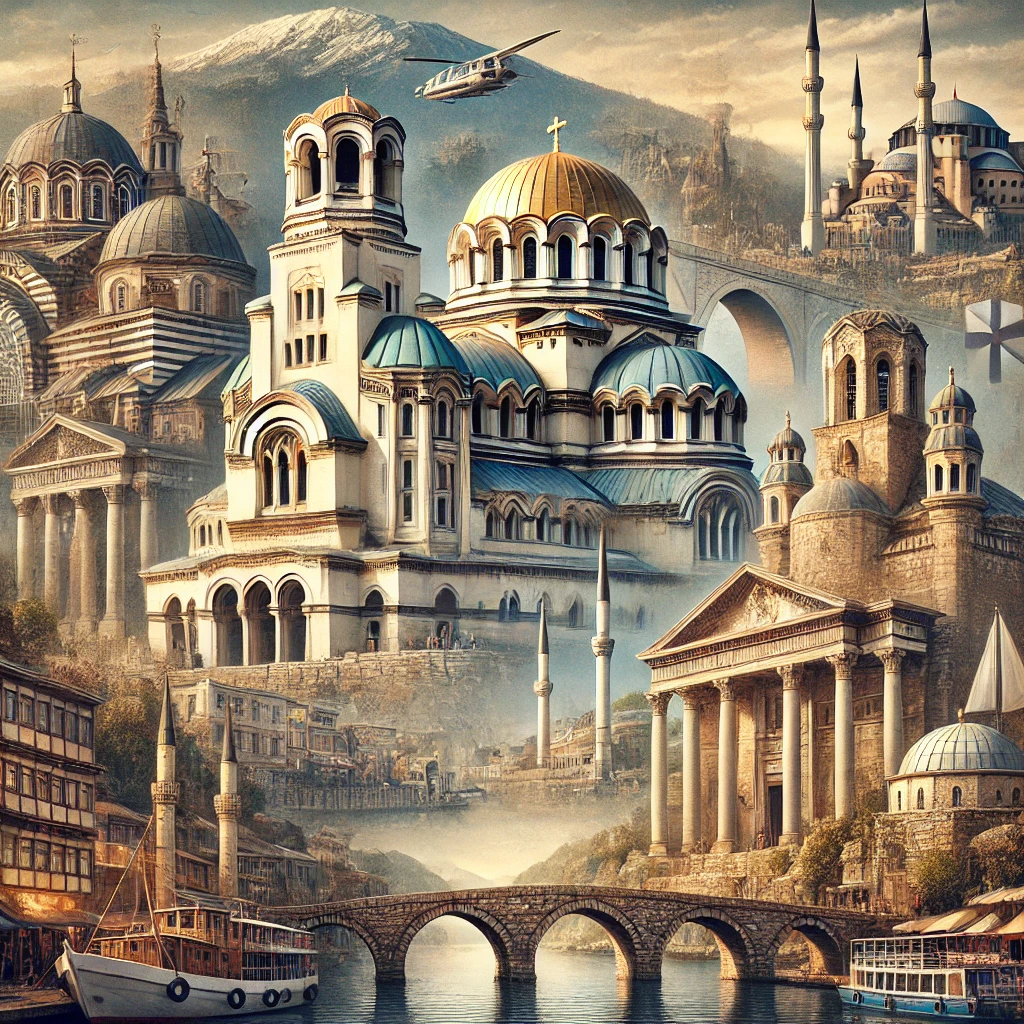Rumelia: Discover the Historical Heart of the Balkans
Rumelia, a historical region in Southeastern Europe, was once an integral part of the Ottoman Empire, encompassing much of the Balkans. This culturally rich area offers a fascinating blend of history, architecture, and natural beauty. In this listicle, we’ll explore the top attractions and experiences in Rumelia, ensuring you make the most of your visit to this historically significant region.
1. The History of Rumelia
Origins and Significance
Rumelia, derived from the Turkish word “Rumeli” meaning “Land of the Romans,” was a crucial administrative region of the Ottoman Empire from the 14th to the 19th century. It included parts of modern-day Greece, Albania, North Macedonia, Bulgaria, and Turkey. Visiting Rumelia allows you to delve into the history of the Ottoman influence in the Balkans and explore the remnants of this vast empire.
Ottoman Influence
The Ottoman period left a lasting impact on Rumelia’s culture, architecture, and traditions. Many cities in this region still boast Ottoman-era mosques, bridges, and fortresses, showcasing the empire’s architectural prowess and cultural heritage.
2. Sofia, Bulgaria
Alexander Nevsky Cathedral
One of the most iconic landmarks in Sofia, the capital of Bulgaria, is the Alexander Nevsky Cathedral. This stunning Orthodox cathedral is one of the largest in the world and a must-visit when in Rumelia.
Ottoman Legacy
Sofia also features significant Ottoman architectural remnants, such as the Banya Bashi Mosque, built in the 16th century by the renowned architect Mimar Sinan. Exploring Sofia gives you a glimpse into the Ottoman legacy in the heart of the Balkans.
3. Thessaloniki, Greece
White Tower
Thessaloniki, a major city in northern Greece, is rich in history and culture. The White Tower, an iconic monument, stands as a symbol of the city. This 15th-century structure was part of the city’s fortifications during the Ottoman era.
Ottoman Heritage
Thessaloniki also boasts Ottoman landmarks like the Yeni Mosque and Bezesteni Market. These sites offer insights into the city’s diverse cultural past and its importance during the Ottoman period.
4. Skopje, North Macedonia
Stone Bridge
Skopje, the capital of North Macedonia, is a city where the past and present coexist harmoniously. The Stone Bridge, built by the Ottomans in the 15th century, spans the Vardar River and connects the old and new parts of the city.
Old Bazaar
The Old Bazaar in Skopje is one of the largest and best-preserved marketplaces in the Balkans. It dates back to the Ottoman period and is a vibrant hub of shops, cafes, and historical sites, reflecting the city’s rich cultural heritage.
5. Plovdiv, Bulgaria
Ancient Roman Theatre
Plovdiv, one of the oldest continuously inhabited cities in Europe, offers a unique blend of Roman and Ottoman history. The Ancient Roman Theatre is a well-preserved monument that hosts various cultural events and performances.
Ottoman Architecture
The city also features beautiful examples of Ottoman architecture, such as the Dzhumaya Mosque, which dates back to the 14th century. Exploring Plovdiv allows you to experience the architectural and cultural fusion of different eras.
6. Berat, Albania
The City of a Thousand Windows
Berat, known as the “City of a Thousand Windows,” is a UNESCO World Heritage site famous for its well-preserved Ottoman architecture. The city’s white-washed houses with large windows create a picturesque and unique skyline.
Berat Castle
The Berat Castle, perched on a hilltop, offers panoramic views of the city and the surrounding landscape. Within the castle walls, you can explore churches, mosques, and ancient ruins, reflecting the city’s diverse historical influences.
7. Edirne, Turkey
Selimiye Mosque
Edirne, located in Turkey, was once the capital of the Ottoman Empire before Istanbul. The Selimiye Mosque, a masterpiece by the architect Mimar Sinan, is a UNESCO World Heritage site and a stunning example of Ottoman architecture.
Historical Monuments
Edirne is home to many other historical monuments, including the Old Mosque and the Edirne Palace. Visiting Edirne offers a deep dive into the early history of the Ottoman Empire and its architectural achievements.
8. Prizren, Kosovo
Ottoman Charm
Prizren, a charming city in Kosovo, is renowned for its Ottoman-era buildings and scenic beauty. The Sinan Pasha Mosque, built in the 17th century, is a prominent landmark that showcases Ottoman architectural style.
Prizren Fortress
The Prizren Fortress, perched on a hill overlooking the city, offers stunning views and a glimpse into the region’s historical significance. The fortress has been a strategic site since the Roman period and continued to play a vital role during the Ottoman era.
9. Sarajevo, Bosnia and Herzegovina
Baščaršija Bazaar
Sarajevo, the capital of Bosnia and Herzegovina, is known for its diverse cultural heritage. The Baščaršija Bazaar, dating back to the 15th century, is a bustling marketplace that reflects the city’s Ottoman past.
Gazi Husrev-beg Mosque
The Gazi Husrev-beg Mosque is one of the most important Islamic structures in the Balkans. Built in the 16th century, this mosque is an architectural marvel and a symbol of Sarajevo’s Ottoman heritage.
10. Bitola, North Macedonia
Ottoman Relics
Bitola, a city in North Macedonia, is home to numerous Ottoman-era buildings and landmarks. The Yeni Mosque and the Ishak Çelebi Mosque are notable examples of the city’s rich Ottoman architectural legacy.
Heraclea Lyncestis
Just outside Bitola lies Heraclea Lyncestis, an ancient city founded by Philip II of Macedon. The site features well-preserved Roman and early Christian ruins, providing a fascinating contrast to the Ottoman history of Bitola.
Conclusion: Exploring the Rich Heritage of Rumelia
Visiting Rumelia offers a unique opportunity to explore a region rich in history, culture, and natural beauty. From the stunning mosques and bustling bazaars to the ancient theatres and majestic fortresses, Rumelia’s attractions provide a captivating glimpse into the past. Whether you’re a history enthusiast, an architecture lover, or simply a curious traveler, Rumelia promises an unforgettable experience.
For more information and to plan your trip, visit: Visit Rumelia
Latest Update: Jul 10, 2024
Your Content Goes Here
A brief summary of the key points in this article.




